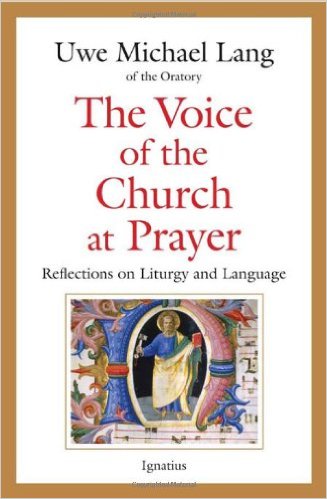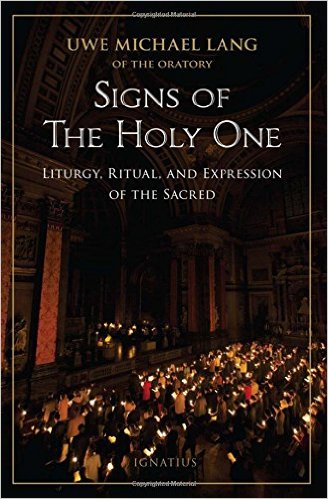 De to bøkene jeg nettopp har lest av Lang er The Voice of the Church at Prayer: Reflections on Liturgy and Language og Signs of the Holy One: Liturgy, Ritual, and Expression of the Sacred. To gode bøker, men det er nokså korte (og for det meste enkle), så det var ikke så mye ny informasjon for meg i dem.
De to bøkene jeg nettopp har lest av Lang er The Voice of the Church at Prayer: Reflections on Liturgy and Language og Signs of the Holy One: Liturgy, Ritual, and Expression of the Sacred. To gode bøker, men det er nokså korte (og for det meste enkle), så det var ikke så mye ny informasjon for meg i dem.
Den første boka beskrives slik hos ignatius.com:
Pope Benedict XVI has made the liturgy a central theme of his pontificate, and he has paid special attention to the vitally important role of language in prayer. This historical and theological study of the changing role of Latin in the Roman Catholic Church sheds light on some of the Holy Father’s concerns and some of his recent decisions about the liturgy.
The Fathers of the Second Vatican Council allowed for extended use of the vernacular at Mass, but they maintained that Latin deserved pride of place in the Roman Rite. The outcome, however, was that modern translations of the prayers of the Mass replaced the Latin prayers.
What was the reason for the Council’s decision and why is there now a desire for greater use of Latin in Catholic worship? Why have some post-conciliar English translations of the prayers of the Mass been replaced?
Fr. Lang answers these questions by first analyzing the nature of sacred language. He then traces the beginnings of Christian prayer to the Scriptures and the Greek spoken at the time of the apostles. Next he recounts the slow and gradual development of Latin into the sacred language of the Western Church and its continuing use throughout the Middle Ages. Finally, he addresses the rise of modern languages and the ongoing question of whether the participation of the laity at Mass is either helped or hindered by the use of Latin.

Den andre boka er beskrevet slik:
Catholic liturgy is far more than its texts. It is a synthesis that also includes several other elements—gesture, music, art, and architecture—which are aspects of the non-verbal language of the sacred and are what make the liturgy beautiful.
Father Lang’s consideration of the beauty of the liturgy addresses the modern notion that beauty is in the eye of the beholder, that the experience of beauty is entirely subjective. This idea makes it difficult to articulate criteria for what is beautiful, yet sacred liturgy does indeed have objective measures for evaluating its principal elements. Reflecting upon these and quoting from authoritative Church documents, Father Lang discusses sacred music, art, and architecture, and demonstrates how the beauty of these elements makes present the sacred.
Pope Benedict XVI said, “The greatness of the liturgy depends—we shall have to repeat this frequently—on its non-spontaneity.” Continuous liturgical experimentation is unable to induce a sense of meaning or peace, writes Father Lang, because novelty does not satisfy the yearning for the Transcendent within the human psyche, which is rarely far from the surface.
